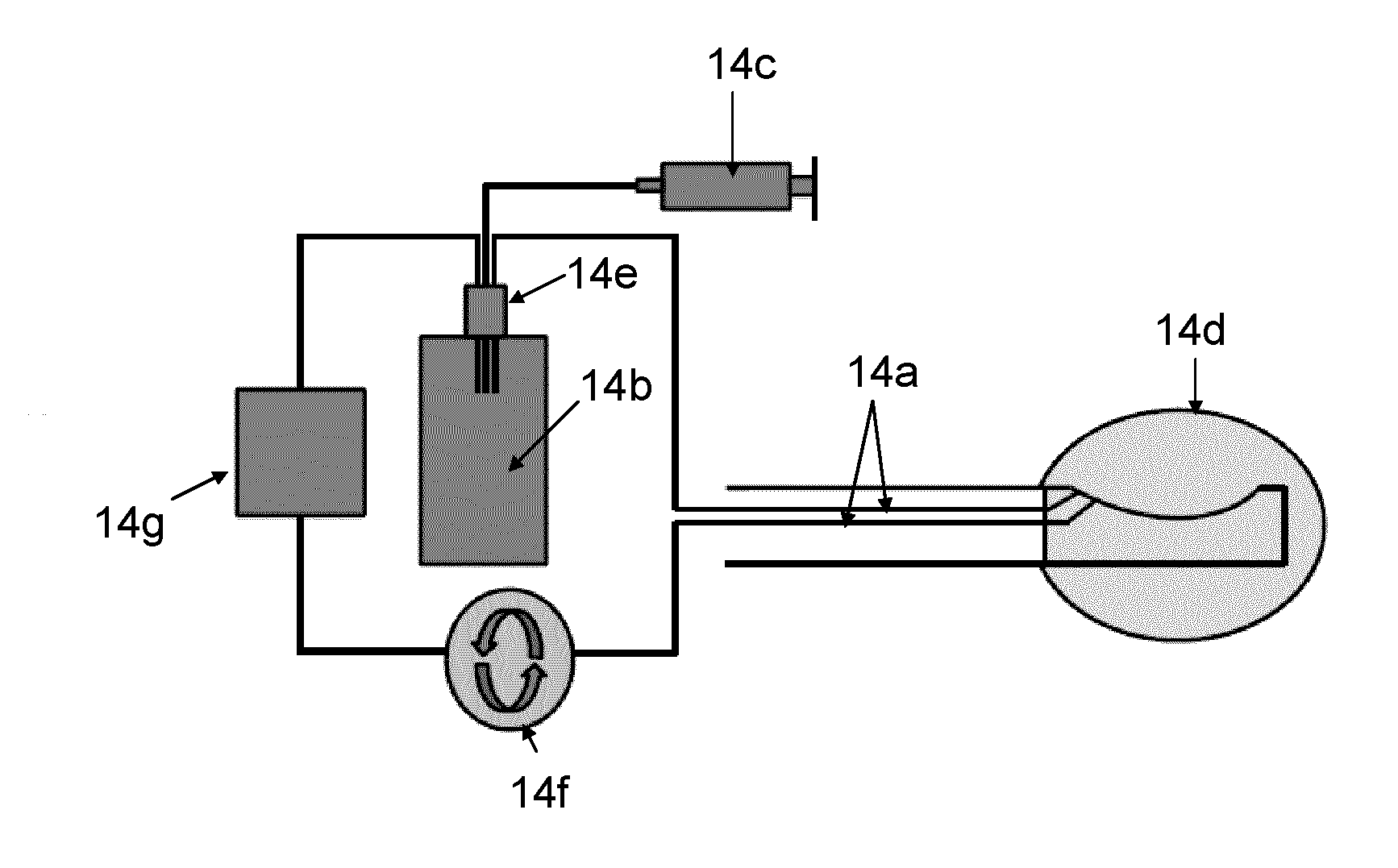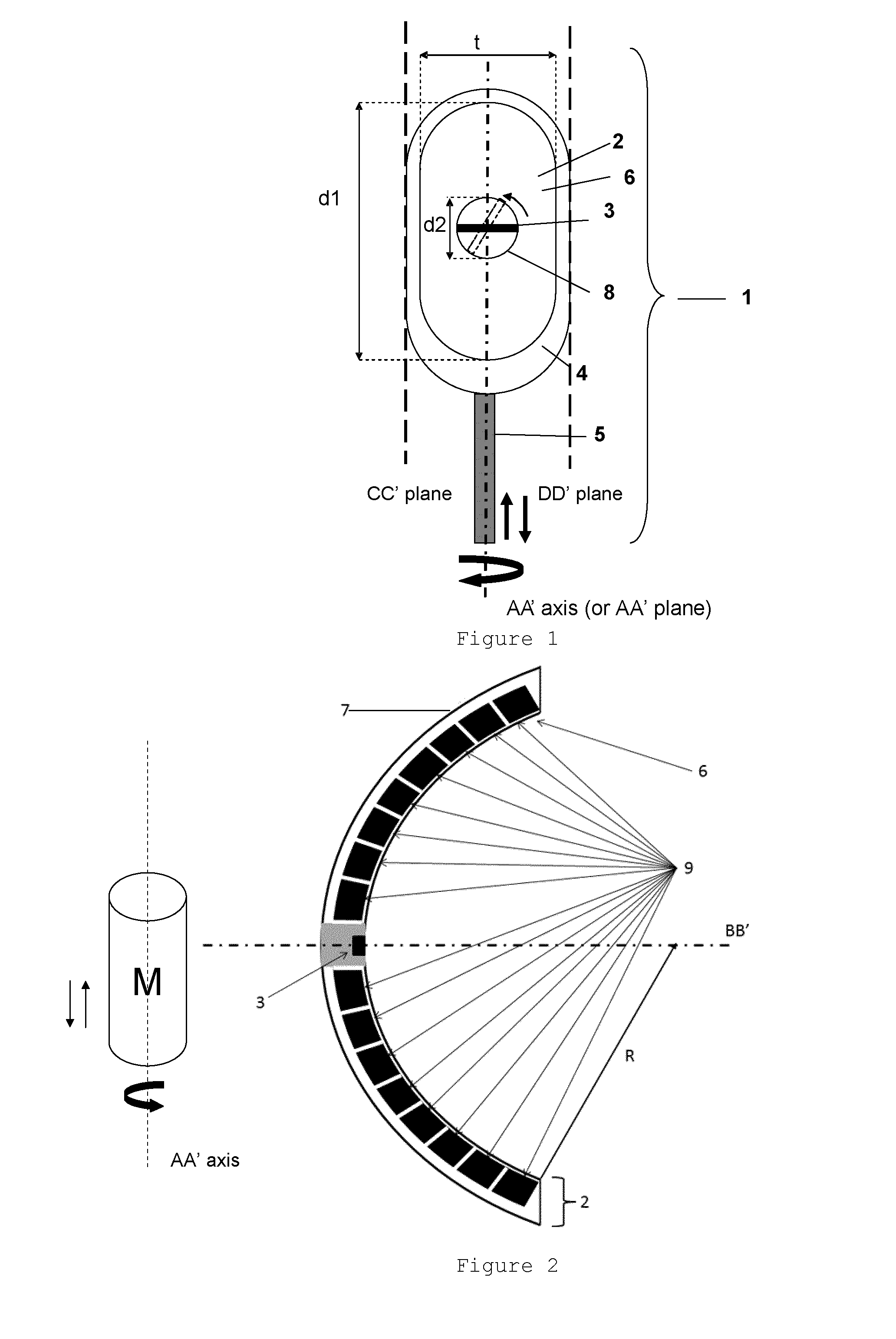Transoesophageal device using high intensity focused ultrasounds for cardiac thermal ablation
a technology of transoesophageal and ultrasound, applied in the field of transoesophageal devices, can solve the problems of thromboembolic risk, loss of atrial mechanical function, and not often used procedures, and achieve the effect of reducing the risk of thromboembolic complications
- Summary
- Abstract
- Description
- Claims
- Application Information
AI Technical Summary
Benefits of technology
Problems solved by technology
Method used
Image
Examples
example 1
Feasibility of Transesophageal Cardiac Thermal Ablation
[0139]The feasibility of transesophageal cardiac thermal ablation using a 1D annular phased array transducer according to the present invention was investigated in computer simulation studies.
[0140]Simulation Configuration:
[0141]Numerical simulations of a treatment of AF by transesophageal HIFU have been performed with a model previously developed (Chavrier and al., 2000).
[0142]Generated pressure maps are calculated from Rayleigh's integral. Then temperature maps are determined using Pennes' Bio Heat Transfer Equation (1948). Finally, the thermal dose inside tissues (in minute equivalent to 43° C.) is calculated from the Sapareto and Dewey's formula (1984). Thereby a lesion is considered irreversible when the thermal dose is greater than or equal to 240 min i.e. 14400 s.
[0143]A realistic model of heart defined using the data of the Visible Human Project™ (VHP) (National Library of Medicine, Bethesda, Md.) was taken. Particularly...
example 2
Pressure Field Maps
[0157]Based on the method of the example 1, simulations have been performed with the following characteristics:[0158]d1=30 mm,[0159]d2=12 mm,[0160]t=14 mm,[0161]R=40 mm,[0162]Frequency of the therapy transducer=3 MHz,[0163]Number of rings=8.
[0164]The conclusions of the example 1 are applicable to this geometry.
[0165]A prototype has been manufactured with these characteristics and pressure field maps according to different focusing (natural or electronic) have been performed.
[0166]These maps were obtained by motorized motion of a hydrophone (HGL-0200, Onda Corporation, Sunnyvale, Calif., USA) in a tank of degassed water.
[0167]Two planes have been acquired. XZ plane is the AA′ plane and YZ plane is the BB′ plane.
[0168]First, pressure field maps have been performed at 40 mm focusing (FIG. 7). This focusing is due to the transducer spherical shape. So this is the natural configuration. It offers the largest focal spot for the minimum number of secondary lobes.
[0169]Th...
example 3
Multiplane Imaging Transducer
[0176]This example presents the point of having a multiplane imaging transducer instead of a biplane or a monoplane transducer. Here, CT images are used instead of ultrasound images.
[0177]FIG. 11a illustrates a cross-section of the left atrium upper part where a lesion has to be performed. The probe (P), the target (T) to treat and the acoustic axis BB′ are represented on this figure. No particular obstacle for ultrasound propagation seems to be visible.
[0178]FIG. 11b illustrates the same cross-section but also the AA′ plane which can be visible with a biplane transducer. In this AA′ plane trachea can be located and seems to be at a sufficient distance (d) from T.
[0179]FIG. 11c shows the two planes but also the 3D trachea representation which has been obtained by segmentation of the CT images. The minimum distance between the trachea area (TA) and T cannot be measured with a biplane transducer without a rotation of the entire probe around the AA′ axis.
[0...
PUM
 Login to View More
Login to View More Abstract
Description
Claims
Application Information
 Login to View More
Login to View More - R&D
- Intellectual Property
- Life Sciences
- Materials
- Tech Scout
- Unparalleled Data Quality
- Higher Quality Content
- 60% Fewer Hallucinations
Browse by: Latest US Patents, China's latest patents, Technical Efficacy Thesaurus, Application Domain, Technology Topic, Popular Technical Reports.
© 2025 PatSnap. All rights reserved.Legal|Privacy policy|Modern Slavery Act Transparency Statement|Sitemap|About US| Contact US: help@patsnap.com



